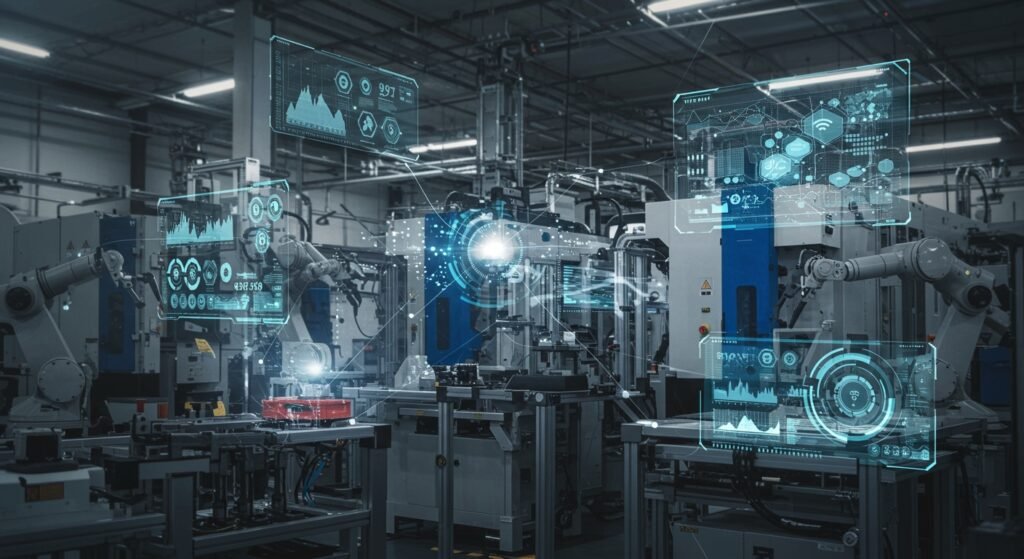Smart Maintenance Systems: Combining IoT, AI, and Edge Computing
The industrial landscape is undergoing a profound transformation, driven by technological advancements that promise unprecedented levels of efficiency and reliability. At the forefront of this revolution is smart maintenance – a proactive approach that leverages cutting-edge technologies like the Internet of Things (IoT), Artificial Intelligence (AI), and Edge Computing to predict and prevent equipment failures before they occur. This paradigm shift moves away from reactive or time-based maintenance, offering substantial benefits in operational uptime, cost reduction, and overall productivity. Understanding how these powerful technologies converge is key to unlocking the full potential of modern industrial operations.
Table of Contents
- The Pillars of Smart Maintenance
- Benefits of Implementing Smart Maintenance
- Real-World Applications
- Challenges and Considerations
- The Future of Smart Maintenance
- Conclusion
The Pillars of Smart Maintenance
Effective smart maintenance relies on the seamless integration and collaboration of three core technological components, each playing a critical role in data collection, analysis, and decision-making.
IoT: The Sensory Network
The Internet of Things (IoT) forms the foundational layer of any smart maintenance system. It involves embedding sensors into industrial machinery and assets that continuously collect vast amounts of data—temperature, vibration, pressure, current, acoustic signatures, and more. These sensors act as the eyes and ears of the system, providing real-time insights into the operational health and performance of equipment. Without this constant stream of granular data, the subsequent analytical steps would be impossible. The connectivity provided by IoT allows this data to be transmitted for further processing.
AI: The Brains Behind the Brawn
Once data is collected via IoT devices, Artificial Intelligence (AI) steps in as the analytical powerhouse. AI algorithms, particularly machine learning models, are trained on historical and real-time data to identify patterns, anomalies, and potential indicators of impending failure. Predictive analytics, a key component of AI in this context, allows maintenance teams to forecast when a piece of equipment is likely to fail, enabling proactive scheduling of maintenance activities. This moves beyond simple threshold alerts, offering deep insights into complex interdependencies and subtle deteriorations that humans might miss.
Edge Computing: Speed and Security
While cloud computing offers immense processing power, sending all raw IoT data to the cloud can introduce latency and bandwidth issues, especially in critical industrial environments. This is where Edge Computing becomes invaluable. Edge devices process data closer to its source – right on the factory floor or at the equipment itself. This localized processing significantly reduces latency, enabling real-time decision-making and immediate responses to critical events. Furthermore, by processing sensitive operational data locally, edge computing can enhance data security and compliance, reducing the amount of raw data transmitted over external networks. This synergy ensures that maintenance decisions are not only smart but also swift and secure.
Benefits of Implementing Smart Maintenance
Adopting a smart maintenance strategy yields a multitude of advantages that directly impact an organization’s bottom line and operational efficiency. These benefits are transformative, offering a competitive edge in today’s fast-paced industrial world.
- Improved Uptime and Reliability: By predicting failures, organizations can schedule maintenance during planned downtimes, drastically reducing unexpected breakdowns and maximizing asset availability.
- Reduced Maintenance Costs: Shifting from reactive repairs to predictive interventions eliminates costly emergency fixes, minimizes spare parts inventory, and optimizes technician deployment.
- Enhanced Safety: Proactive maintenance prevents catastrophic failures, creating a safer working environment for employees by addressing issues before they become hazards.
- Optimized Resource Utilization: Data-driven insights allow for better allocation of human resources, tools, and spare parts, ensuring that resources are used efficiently where they are needed most.
- Extended Asset Lifespan: Regular, condition-based maintenance helps preserve machinery, extending its operational life and delaying the need for costly replacements.
Here’s a comparison outlining the significant shift:
| Feature | Traditional Maintenance | Smart Maintenance (IoT, AI, Edge) |
|---|---|---|
| Approach | Reactive / Time-based | Predictive / Prescriptive |
| Data Source | Manual inspections, scheduled checks | Real-time sensor data (IoT) |
| Decision Making | Experience-based, delayed | AI-driven insights, real-time |
| Cost Impact | High emergency costs, over-maintenance | Reduced unplanned downtime, optimized costs |
| Downtime | Frequent unplanned, long durations | Minimized unplanned, shorter durations |
Real-World Applications
The versatility of smart maintenance systems allows their application across various industries, each benefiting from enhanced operational intelligence.
Manufacturing
In manufacturing, smart maintenance ensures continuous production lines by monitoring critical equipment like CNC machines, robotic arms, and assembly lines. Predictive analytics can detect early signs of wear in motors or bearings, preventing costly stoppages and maintaining product quality. Learn more about industrial IoT applications on this Industrial IoT resource.
Energy and Utilities
Power plants, wind farms, and grid infrastructure benefit immensely from real-time monitoring. Smart maintenance systems can predict failures in turbines, transformers, or transmission lines, allowing utility companies to perform targeted maintenance and ensure uninterrupted service, minimizing outages and improving safety for field workers.
Logistics and Transportation
From fleet management to warehouse automation, IoT and AI optimize vehicle performance and material handling equipment. Predictive maintenance on engines, tires, and conveyor belts reduces breakdowns, keeps logistics flowing, and ensures timely deliveries.
Challenges and Considerations
While the benefits are clear, implementing smart maintenance is not without its hurdles. Organizations must address data security and privacy concerns, especially with sensitive operational data. Integrating legacy systems with new IoT and AI platforms can be complex, requiring careful planning and robust middleware solutions. Furthermore, a skilled workforce capable of managing and interpreting these advanced systems is crucial for successful adoption. Investment in training and upskilling employees will be a vital component of any digital transformation strategy.
The Future of Smart Maintenance
The trajectory for smart maintenance is one of continuous growth and sophistication. We can anticipate even more advanced AI models, deeper integration with enterprise resource planning (ERP) systems, and the proliferation of autonomous maintenance tasks performed by robotics. The convergence of these technologies will not only optimize current assets but also inform the design of future machinery, making them inherently more resilient and easier to maintain. This evolution is a core part of the broader digital transformation sweeping across all sectors.
Conclusion
Smart maintenance systems, powered by the dynamic trio of IoT, AI, and Edge Computing, represent a significant leap forward in operational excellence. By transforming reactive maintenance into a proactive, data-driven discipline, industries can achieve higher levels of efficiency, reduce costs, enhance safety, and extend the lifespan of critical assets. Embracing these technologies is no longer an option but a strategic imperative for any organization aiming to thrive in the modern industrial era. The journey towards truly intelligent and autonomous operations has begun, promising a future where downtime is minimized and productivity is maximized.


